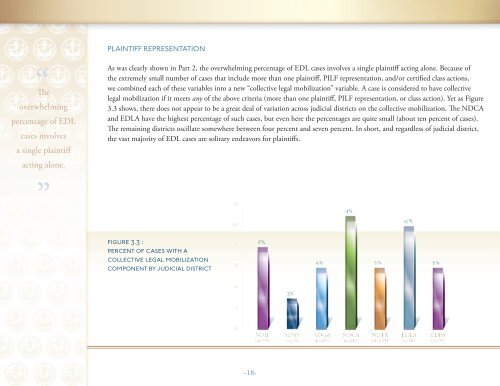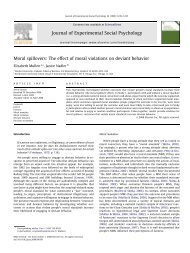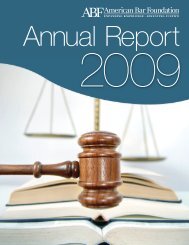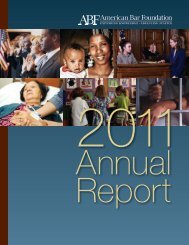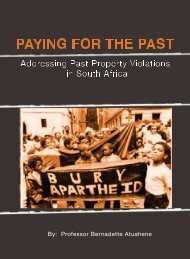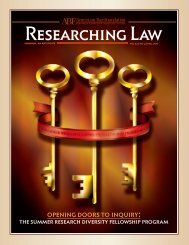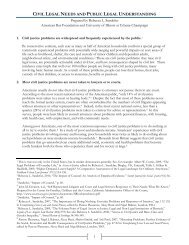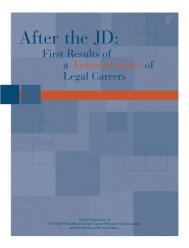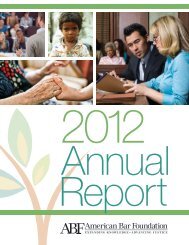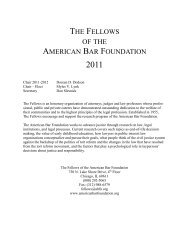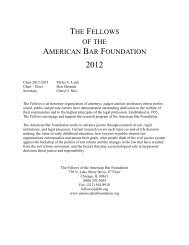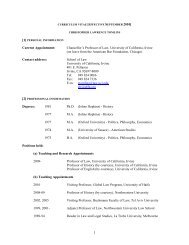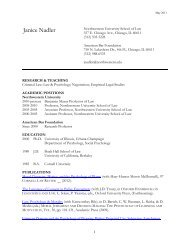Contesting Workplace Discrimination in Court - American Bar ...
Contesting Workplace Discrimination in Court - American Bar ...
Contesting Workplace Discrimination in Court - American Bar ...
You also want an ePaper? Increase the reach of your titles
YUMPU automatically turns print PDFs into web optimized ePapers that Google loves.
PLAINTIFF REPRESENTATIONTheoverwhelm<strong>in</strong>gpercentage of EDLcases <strong>in</strong>volvesa s<strong>in</strong>gle pla<strong>in</strong>tiffact<strong>in</strong>g alone.As was clearly shown <strong>in</strong> Part 2, the overwhelm<strong>in</strong>g percentage of EDL cases <strong>in</strong>volves a s<strong>in</strong>gle pla<strong>in</strong>tiff act<strong>in</strong>g alone. Because ofthe extremely small number of cases that <strong>in</strong>clude more than one pla<strong>in</strong>tiff, PILF representation, and/or certified class actions,we comb<strong>in</strong>ed each of these variables <strong>in</strong>to a new “collective legal mobilization” variable. A case is considered to have collectivelegal mobilization if it meets any of the above criteria (more than one pla<strong>in</strong>tiff, PILF representation, or class action). Yet as Figure3.3 shows, there does not appear to be a great deal of variation across judicial districts on the collective mobilization. The NDCAand EDLA have the highest percentage of such cases, but even here the percentages are quite small (about ten percent of cases).The rema<strong>in</strong><strong>in</strong>g districts oscillate somewhere between four percent and seven percent. In short, and regardless of judicial district,the vast majority of EDL cases are solitary endeavors for pla<strong>in</strong>tiffs.figure 3.3 :percent of cases with acollective legal mobilizationcomponent by judicial district-18-


